Martini Glasses, Mattresses and the Avalanche Scenario
By Joe Lammers
When I explain weak crystals to people, I like to keep it simple.
-Small, tight and round crystals are strong.
-Large, loose and irregular shaped crystals are weak.
The latter crystals are weak for a few reasons: there are fewer points of contact where they can touch each other and bond, and there is more leverage at contact points so collapse within those crystals is more likely. Whenever we experience extended periods of cold, clear weather, we are more likely to see weak crystal development, and as a result: touchy avalanche conditions. This season’s “feast or famine” weather swings have set the stage (more than once) for this setup.
The last cold and clear spell lasted from January 7th to January 15th and was perfect for the development of weak crystals called surface hoar. Surface hoar forms when moisture from the air creates the winter version of dew on the snow surface. Because the process happens below freezing, ice crystals form instead of water droplets. After extended periods, these ongoing deposits of ice add to the size and complexity of the developing surface grains and the end result is surface hoar, those feathery surface crystals you’ve probably noticed in the days prior to the recent snowfall. The recently developed surface hoar is widespread at all elevation bands throughout the interior mountains and some parts of the South Coast. You don’t have to be a full-time snow geek to see that these grains are large (up to 30mm), loose, irregular and, well, really weak. Oh yeah… once buried, these babies tend to persist in the snowpack, sometimes remaining a reactive weak layer for weeks.
Martini Glasses waiting for the Mattress
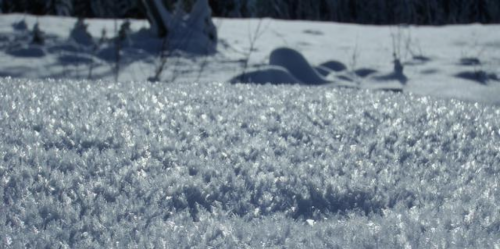
On Friday, January 15th up to 25cm of new snow fell throughout the Columbia Mountains. My best guess is wind blew that new snow around in high-elevation wind-exposed terrain creating a reactive wind slab. Elsewhere, I’m sure the new snow is fairly light and dry, and isn’t quite a cohesive slab yet. In steep sheltered terrain, I’d expect a fair bit of loose dry avalanche activity as the unconsolidated surface snow is likely running far and fast. The ski bum in me calls this power sluffing.
Lest we forget, all that new snow overlies the weak surface hoar I’ve been talking about (I’m picturing a white mattress overlying a million little martini glasses), and I feel it’s a bit of a ticking time bomb. In other words, I don’t think we’ve seen the worst of it because the overlying slab has to undergo some changes before it reacts as a more widespread problem. Changes that will add to the sensitivity to triggering and destructive potential of the developing slab include wind, more new snow and warming. Looking at the weather forecast, a blast of snow and wind on Sunday will add another “white mattress” over top of the fragile martini glasses, but will this be the tipping point for more widespread slab avalanche activity? In some places it might, but I get the feeling we’re about to see what’s often referred to as an incremental loading pattern. In other words, the developing slab will likely reach threshold for reactivity in different places at different times as wind, temperature and snowfall amounts will vary across the province, from range to range, and perhaps even from drainage to drainage with each successive weather system.
I think this condition will be with us for a while, so we should start thinking about how we’re going to recognize and manage risk associated with this developing hazard. When heading out into the backcountry, consider these points:
* The Avalanche Bulletin provides general guidance, but you’ll want to pay close attention to local conditions, which will likely vary throughout forecast regions and will affect local hazard. Dig down and identify the surface hoar layer and consider backing off to simple low-angle terrain as the overlying slab gets deeper and more cohesive. Depth will add mass to the avalanche and cohesion will contribute to its ability to propagate over wider distances.
* Anticipate the slab being deeper and more consolidated in loaded areas in wind-exposed terrain.
* Test the reactivity of the slab by ski or sled cutting small, low-consequence slopes that share similar characteristics to the slope you’d like to ride.
* If there’s no slab or the slab seems manageable (it’s lower than the top of your boot and unconsolidated), gradually progress into more aggressive terrain while assessing the consequences of an avalanche if it were to release.
* Watch out for terrain traps: places where the burial depth or injury potential of even a small avalanche is magnified. Gullies, open water, crevasses, tree wells, cliffs, and rapid transitions from steep to flat are some examples of terrain traps.
* You may not be only dealing with the surface snow. Consider that an avalanche in motion may also trigger deeper a “step down avalanche” that fails deeper in the snowpack, on weak layers that persist from earlier in the season. You can reduce the chance of becoming involved in a step down scenario by being minimizing exposure to large overhead slopes and cornices.
* Use the new Mountain Information Network. This is a great way to share what you’re seeing and observe how the developing avalanche problem is reacting in specific locations within our forecast regions.
At the end of the day, safe mountain travel is all about terrain selection. If all of this sounds too confusing, err on the side of caution and stick to simple, lower-angled terrain. We’ll be thinking about these loose, large and irregular shaped buried crystals for the foreseeable future. We hope you will be too.



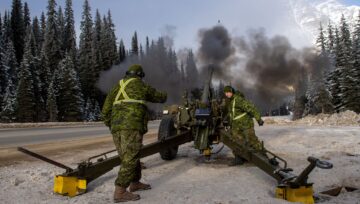
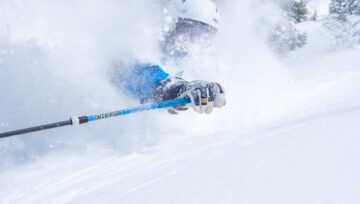
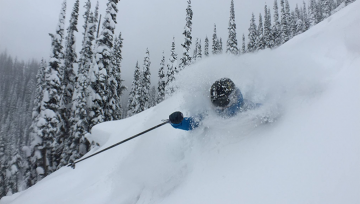
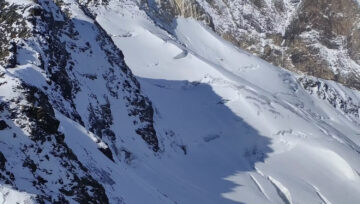
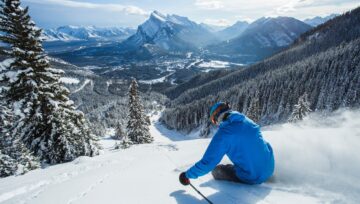


Comments